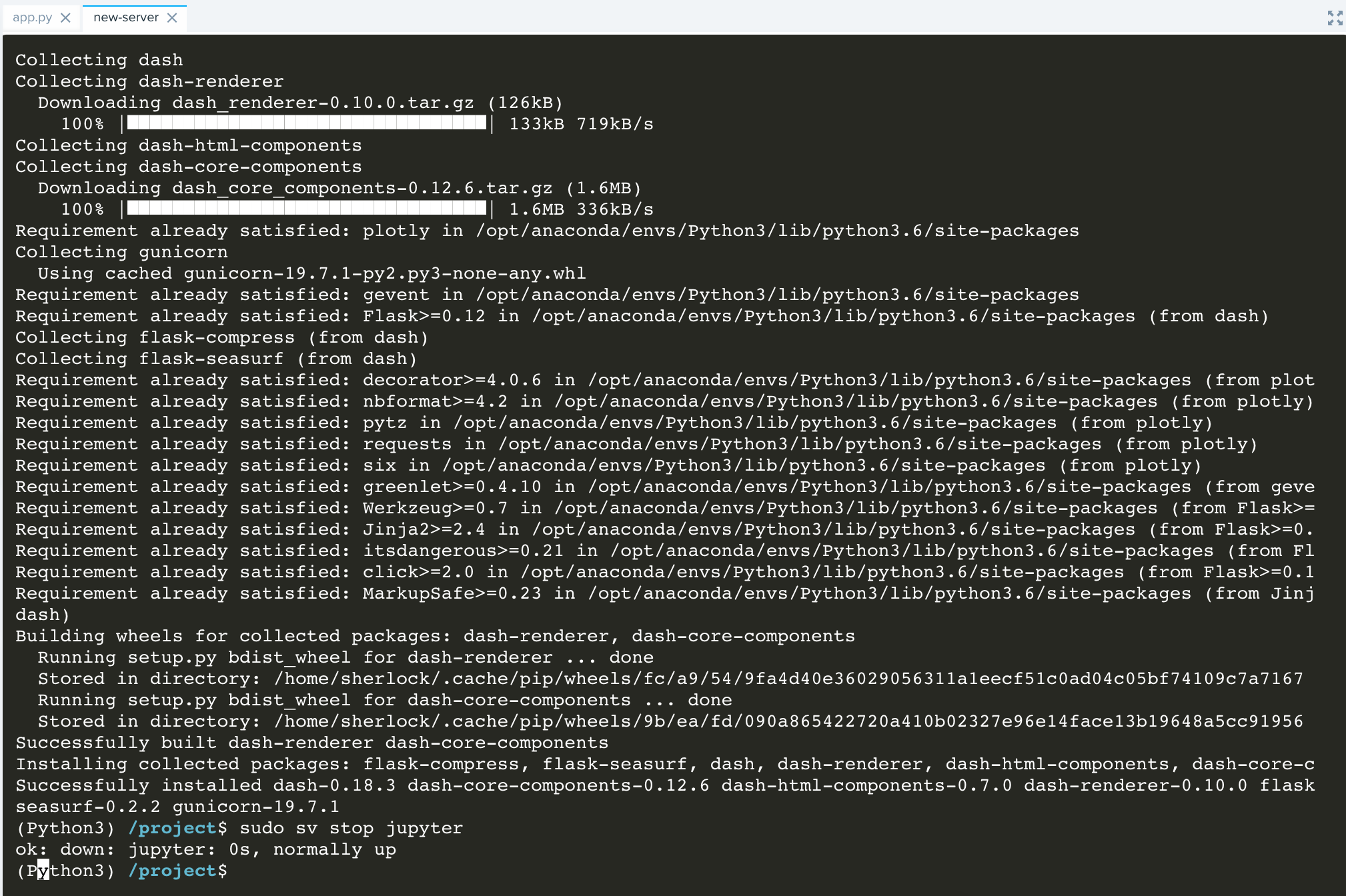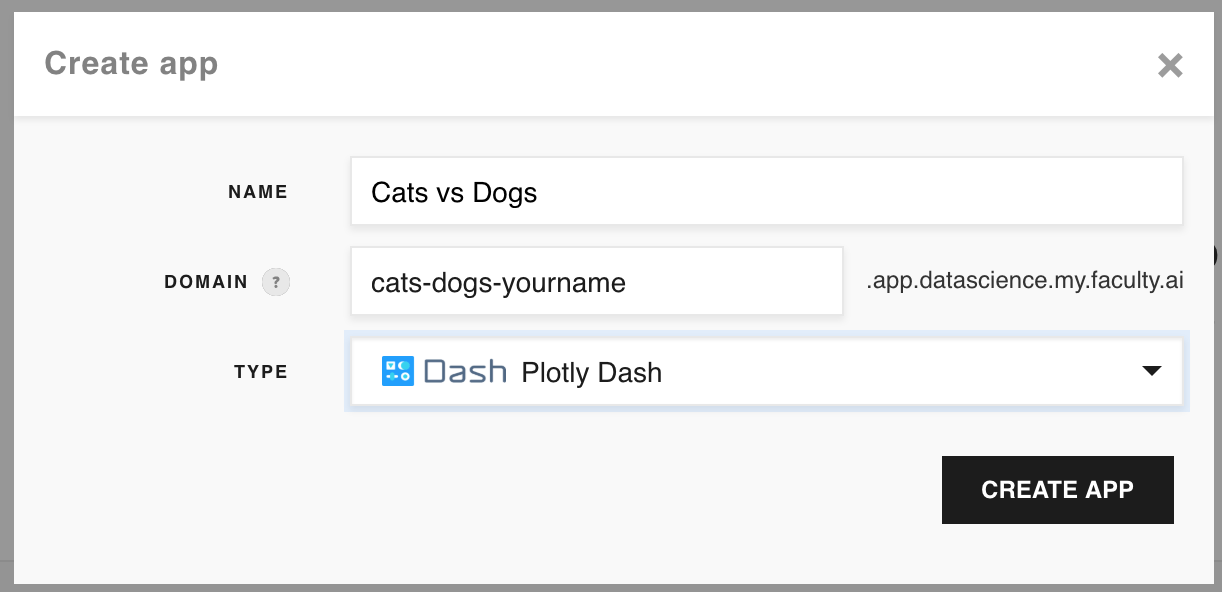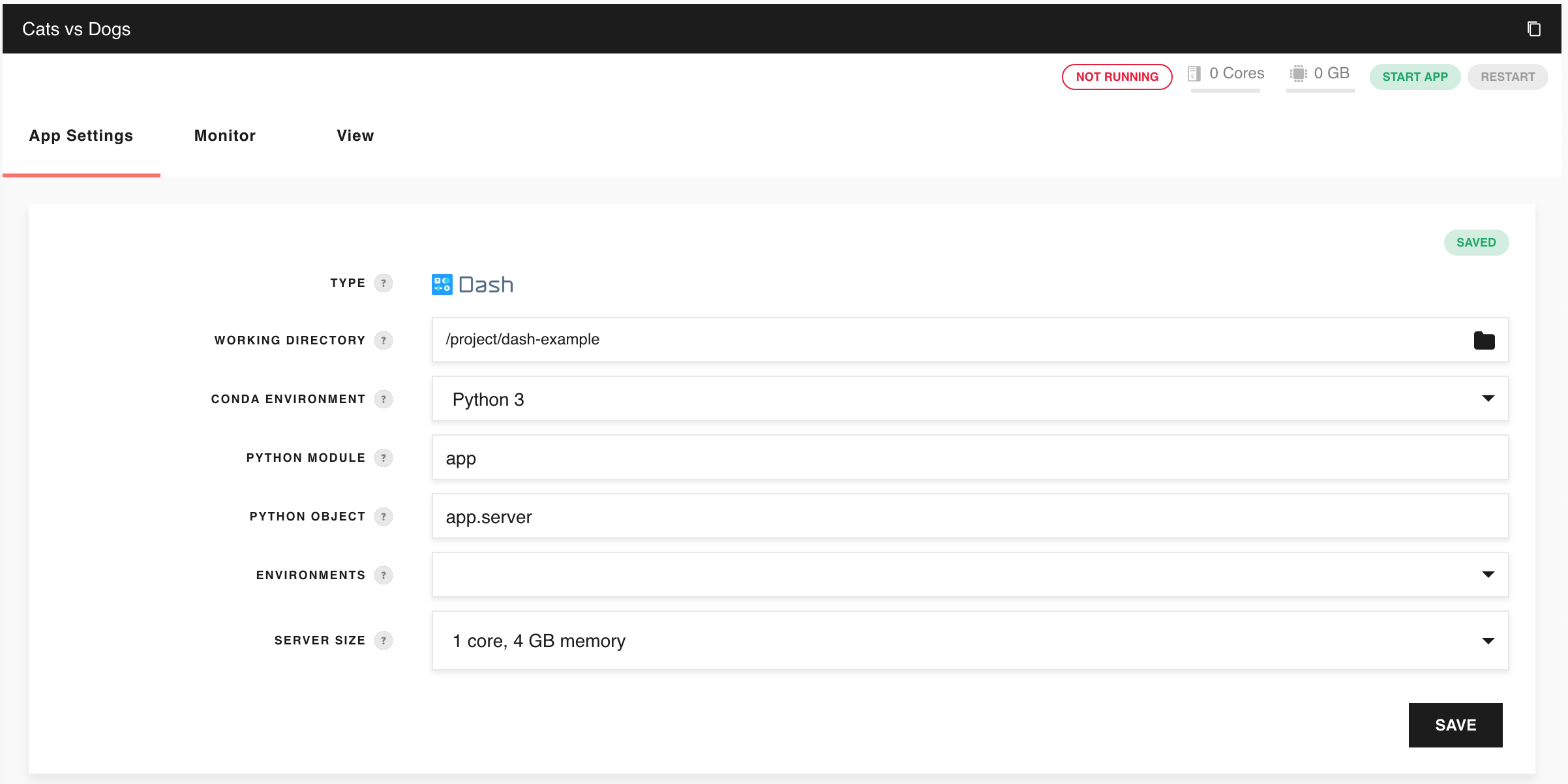Using Plotly Dash¶
Faculty supports building Plotly Dash applications. Plotly Dash offers a flexible interface for building interactive dashboards entirely in Python (you don’t need to write any JavaScript). For additional examples, check out the Plotly Dash gallery and our own examples section.
Contents
Developing the application¶
When you are just starting out, you probably want to develop the application without exposing it to other people in your project.
The easiest way of doing this is to just create a Jupyter server, open a terminal in that server and run the following commands:
$ conda activate Python3
$ pip install dash dash-renderer dash-html-components dash-core-components plotly
$ sudo sv stop jupyter

This has stopped the Jupyter notebook running on that instance, freeing the port for our application.
Let’s start by creating a directory in the project workspace:
$ mkdir -p /project/dash-example
Let’s now write the code for our application. We will create an application
that predicts whether someone is a cat-person or a dog-person based on their
name. Create a file called app.py in /project/dash-example, with the
following contents:
import dash
import dash_core_components as dcc
import dash_html_components as html
from dash.dependencies import Input, Output
app = dash.Dash(__name__)
app.layout = html.Div(children=[
html.H1(children='Are you a cat person?'),
html.Label('Your name: '),
dcc.Input(id='input-div'),
html.Div(id='output-div', children=[])
])
@app.callback(
Output(component_id='output-div', component_property='children'),
[Input(component_id='input-div', component_property='value')]
)
def update_output(input_value):
if input_value is None or not input_value:
return ['You have not typed your name yet.']
if input_value == 'Heisenberg':
return ['You are a cat person.']
else:
return ['You are a dog person.']
if __name__ == '__main__':
app.run_server(host='127.0.0.1', port=8888, debug=True)
This code defines a minimal application that listens on port 8888, the port that we have freed by stopping Jupyter. Let’s now start our app:
$ cd /project/dash-example
$ python app.py
Note
Running the app with python app.py runs the app with its development
server in debug mode (see app.run_server() in the example code above),
which provides nice features like automatic reloading of the app when the
code is changed.
However, this is not suitable for use in deployed applications, where we
instead use gunicorn, a production-ready Python HTTP server. If you want to
run the app in the same way as it will be run in production, install
gunicorn and gevent from pip (pip install gunicorn gevent) and run the
app with:
$ gunicorn --workers 4 --worker-class gevent --bind 127.0.0.1:8888 app:app.server
If you now open your server from the servers section of the workspace:

You will see your application!

Carry on developing your app. When you save changes to your code, the app will automatically reload itself (unless you are running it with gunicorn, in which case you will need to first stop it by typing Ctrl-C in the terminal in which you started the app, and restart it by running the same command).
Deploying the application¶
You have now developed a great dashboard, and you want to let other members of your project access it. Faculty supports hosting Plotly Dash applications. Head to the Deployments page in Faculty, and in the Apps tab click the + button above the tab to create a new app. You will be prompted to enter a name and domain for your app. Select Plotly Dash for Type.

Click Create App. You will then be taken to the App Settings page.
You will need to make the following changes to the application settings:
Change the working directory to
/project/dash-example.Change the python module to
app. This should be the name of the file containing the app, without.py.Change the python object to
app.server. This should be the name of the Python variable that gunicorn will serve.

Save your application by clicking the Save button, then click Start app to start your Plotly Dash server. After a few seconds, you will see the status of your app change to Running. At this point, a URL will appear. Select that URL and place it in your browser search bar. You will be taken to the application! Behind the scenes, Faculty verifies that you are at least an observer in the project that the app belongs to. While your app is deployed, you can monitor its logs in the Monitor tab.
Deploying Flask and Django applications¶
Plotly Dash applications are deployed using Gunicorn. You can leverage this to deploy any WSGI web framework. This lets you, in particular, deploy Flask and Django applications.
Flask applications will work out of the box. Your application will contain a file with a line like:
server = Flask(...)
When creating the deployment in Faculty, choose the Python module
containing that line for python module. For instance, if that line
is in a file called app.py, the python module will be
app. Choose server as the python object.
For Django applications, you will need to create an environment that
installs django through pip. Your application should have a file
called <project_name>/wsgi.py containing the following lines:
from django.core.wsgi import get_wsgi_application
application = get_wsgi_application()
When creating the deployment through the deployment tab, choose
<project_name>.wsgi as the python module and application as
the python object.
See the Django documentation on WSGI for more information.
Examples¶
For ideas on how to develop a great dashboard with Plotly Dash, check out our examples:
